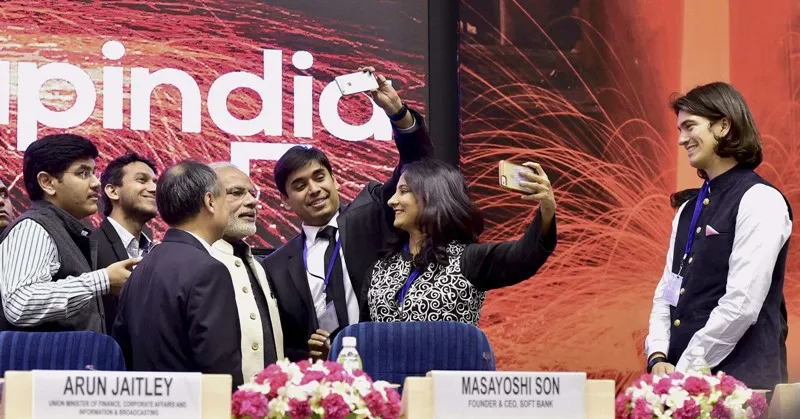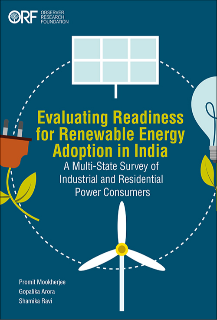Being workaholics and 24x7 people, Team Modi must be avid coffee drinkers, with a yen for espresso. For the uninitiated, espresso is the end product of forcing boiling water through ground coffee, thereby concentrating the caffeine content and enhancing the “kick”.
India’s “espresso” moment happened last Saturday in New Delhi with the grand inauguration of “Start Up Stand Up”, the new campaign with the unfortunate acronym SUSU. This new mission focuses government resources and effort around the creation of new entrepreneurs. Established businessmen were not welcome to join the party at Vigyan Bhawan. And some confusion prevailed whether startups in the old economy space were on the guest list, or it was restricted to the “new economy” subset of IT-enabled startups.
But the crowd of young “been there and wannabe” entrepreneurs were not quibbling about such nit-picky issues. They were there to bond, stamp their feet and whistle their approval at being noticed and included in the national mainstream.
The presence of the founders of Uber, WeWork and Softbank was icing on the cake, which undoubtedly was an extended opportunity for “selfies” with Prime Minister Modi. Expectedly, older inhabitants of this charmed business space were not impressed by the ground swell of support from the young. They spent their time warning against the danger of expecting too much from this space, which is already clogged. Apparently of the 500 e-commerce startups launched in India, only 10 survive — a survival rate of 2 per cent. Internationally, the survival rate for startups is better at 40 per cent.
But India’s burgeoning, literate, young “wannabe” entrepreneurs would have no truck with such pessimism. They pushed and shoved and cheered their way into the frisson of excitement which Team Modi had carefully generated for the event. Hope sprung eternal in every ones’ heart as Prime Minister Modi stoked the embers of youth entrepreneurship. So how long will the “espresso moment” last?
Adrenalin has a self-regulating mechanism for ramping down. The Prime Minister’s gesture is a welcome beginning to look beyond the “big men in suits” for business solutions. Mr Modi is right when he looks to the young and the intrepid to take risks, follow their dreams and escape the golden handcuffs of contracted servitude. If we want to scale up jobs and disperse commercial opportunities across the country,facilitating small startups is likely to give the biggest bang for the public buck.
India is not short of business enterprises. We have 1.4 million registered companies though 30 per cent are closed, being liquidated or not functional. In comparison, our workforce is around 700 million. Just one working company per 700 workers is way too low. Even worse,75 per cent of the operational companies have an authorised capital of less than Rs 25 lakh ($38,000) and one-third have less than Rs 1 lakh ($1,500). This illustrates their limited potential for adding to gross employment. It also explains why only 1.5 per cent of the workforce is in formal, private employment, with the government providing jobs for another 2 per cent. Incentivising new entrepreneurs makes sense.
The Prime Minister announced a package of goodies to induce those present to just go and do it — tax breaks; venture capital; easier entry and exit processes and innovation hubs. These are the basics for any industry to grow. But startups need more. By definition, a successful startup is small but poised for explosive growth company. This is what attracts investors to accept the higher risk in anticipation of the huge rewards from added volumes and scale.
The government is best placed to help in adding scale. However, care must be taken that government finance does not dilute the financial discipline which private finance imposes. One option is for the finance minister to encourage ministries to spend a small proportion of their purchase budgets for this purpose. The Union government has a residual budget of around of Rs 7 lakh crore ($100 billion), after accounting for salaries and pensions, overheads, interest payments and transfers to state governments. Even a 1 per cent allocation for buy-back arrangements with startups translates into performance-dependent support of Rs 7,000 crore ($1 billion) annually. This amount could usefully provide a revenue cushion to around 500 startups.
The Prime Minister proposed to provide Rs 2,000 crore ($300 million) annually as a public grant for institutional finance and a guarantee of around Rs 400 crore ($60 million) to de-risk venture capital. Letting actual user departments contract directly with startups using their individual budgets is preferable. First, encouraging government departments to work with startups has the hope that some of the private sector mojo will rub-off on them. Indeed, government officials who participated in the inaugural function seemed a far cry from the stodgy, grumps that “babus” are presumed to be.
Second, organically linking actual government users with startup founders bridges the chasm between small business and government. Startups are nimble problem solvers and disrupters. They can be used beneficially to enhance the effectiveness of public spending. But babus have a deep aversion to be fingered by audit. Only an explicit budgetary direction to engage tangibly with startups can nudge departmental secretaries to risk public money.
Third, it makes sense to de-concentrate the mandate for growing startups across the entire government architecture. Embedding this objective into central schemes further extends this mission to the state governments which manage these schemes.
Lastly, government should focus on encouraging startups in enhancing the rule of law, social protection, human development and agriculture. Commerce and industry are already well serviced by established mentors and private venture capital funds.
Last Saturday’s fever in Vigyan Bhawan was just the froth at the top of a cup of espresso. Keeping the adrenalin going will take far more grounded effort to keep those who stood up from sitting down again.
This article originally appeared in The Asian Age.
The views expressed above belong to the author(s). ORF research and analyses now available on Telegram! Click here to access our curated content — blogs, longforms and interviews.




 PREV
PREV


